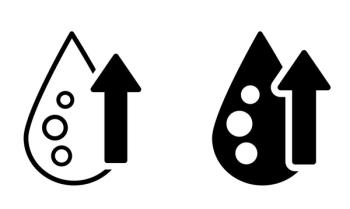
Statins Are Safe and Do What Their Makers Claim
OXFORD, England -- Statin drugs are highly effective and are generally safe when used as indicated, a literature review confirmed.
OXFORD, England, June 7 -- Statin drugs are highly effective and are generally safe when used as indicated, a literature review confirmed.
"Statins are a well-tolerated and extensively studied group of drugs. Their proven impact on cardiovascular disease risk has been driving their widespread use," wrote Jane Armitage, M.D., in an early online release of an article to be published in The Lancet.
At commonly prescribed doses, adverse events such as rhabdomyolysis, and myopathy are rare, and elevated liver function tests are uncommon, wrote Dr. Armitage, of the Clinical Trial Service Unit and Epidemiological Studies Unit at the University of Oxford.
She conducted a review of published studies of statins, primarily large randomized studies, but also smaller ones, observational studies, and other reviews. Her review focused on the six agents that are available in most parts of the world, listed in order of their introduction:
- Lovastatin (Mevacor)
- Simvastatin (Zocor)
- Pravastatin (Pravachol)
- Fluvastatin (Lescol)
- Atorvastatin (Lipitor)
- Rosuvastatin (Crestor)
A seventh statin, cerivastatin (Baycol) was withdrawn from the market in 2001 because of the high risk of rhabdomyolysis associated with its use.
Dr. Armitage looked at whether each agent can safely achieve and maintain low levels of both total cholesterol and LDL and at the safety of each agent at different doses.
She noted that concerns about the effect of long-term statin use come from observational cohort studies, which have consistently shown that people with low total cholesterol levels are at a higher risk of subsequent death from cancers, respiratory disease, hemorrhagic stroke, and non-medical causes than people with higher cholesterol.
But, she noted, in populations where the diet is low in saturated fat, both cholesterol levels and coronary heart disease levels are low, and there is no evidence of excess deaths from other causes.
"Collective results from large randomized controlled trials of statin treatment have now provided confirmation that reducing cholesterol and maintaining low cholesterol levels for at least five years is not only safe but beneficial," Dr. Armitage wrote. "Neither overall, nor in individual trials that lowered LDL cholesterol to well below average levels, was there any increased risk of the types of non-vascular death suggested by the observational data."
In her analysis of adverse effects, Dr. Armitage noted that myopathy, defined as muscle pain or weakness accompanied by blood creatine kinase greater than 10 times the upper limit of normal, occurs in fewer than one in 10,000 patients on statins at higher doses.
However, she noted, the risk varies among the different statins, and may increase when the drugs are used at higher doses or in combinations with other agents.
"The risk of myopathy with all statins seems to be particularly affected by drug interactions that are sometimes related to the metabolism of particular statins via the cytochrome P450 system, but other mechanisms might also be involved," she wrote.
A rarer and more serious complication is rhabdomyolysis, a severe myopathy marked by myoglobin release into the circulation and risk of renal failure.
"If myopathy or rhabdomyolysis is detected, statin treatment should immediately be stopped," Dr. Armitage wrote.
"If creatine kinase is substantially raised (e.g. >10,000 IU/L), a high fluid intake should be recommended to minimize the risk of renal impairment, and supportive management might be necessary, she noted. After this, creatine kinase levels should fall and muscle pain and function improve over the course of a few days; full recovery usually occurs within a few weeks."
She also noted that while asymptomatic elevations of liver transaminases occurs with all statins, it's not clear whether elevated liver enzymes are associated with increased risk of liver disease. The drugs are contraindicated in patients with active liver disease, she added.
Discussing statin use in special populations, Dr. Armitage said that there is no clear evidence, as some have suggested, that indicates that alcohol abusers who are on statins have a greater risk of myopathy compared with patients who have a normal alcohol intake.
Statins are contraindicated during pregnancy and breastfeeding, and patients taking warfarin (Coumadin) for anticoagulation should have extra monitoring to see whether statins are having an effect on INR, Dr. Armitage said.
She noted, however, that statins do appear to be safe in patients with compromised renal function.
"There is now a considerable body of evidence that most statins are safe to prescribe in the presence of moderate renal impairment, and might even preserve glomerular filtration," she wrote.
Older patients do not usually require dose adjustment, although extremely elderly patients may be at increased risk for myopathy, said Dr. Armitage. At the other end of the spectrum, the drugs are not recommended for use in children, except in cases of severe familial hyperlipidemias, and then only under a specialist's care.
Noting that muscle pain is common in middle-aged patients, Dr. Armitage concluded that it is unlikely to be caused by statin treatment. "Measurement of creatine kinase in such patients can exclude myopathy and allow safe continuation of treatment," she wrote. "Importantly, any risks of myopathy and rhabdomyolysis can be kept to a minimum by knowledge of potential drug interactions and the vulnerability of particular groups of patients."
Newsletter
Enhance your clinical practice with the Patient Care newsletter, offering the latest evidence-based guidelines, diagnostic insights, and treatment strategies for primary care physicians.






















































































































































































































































































